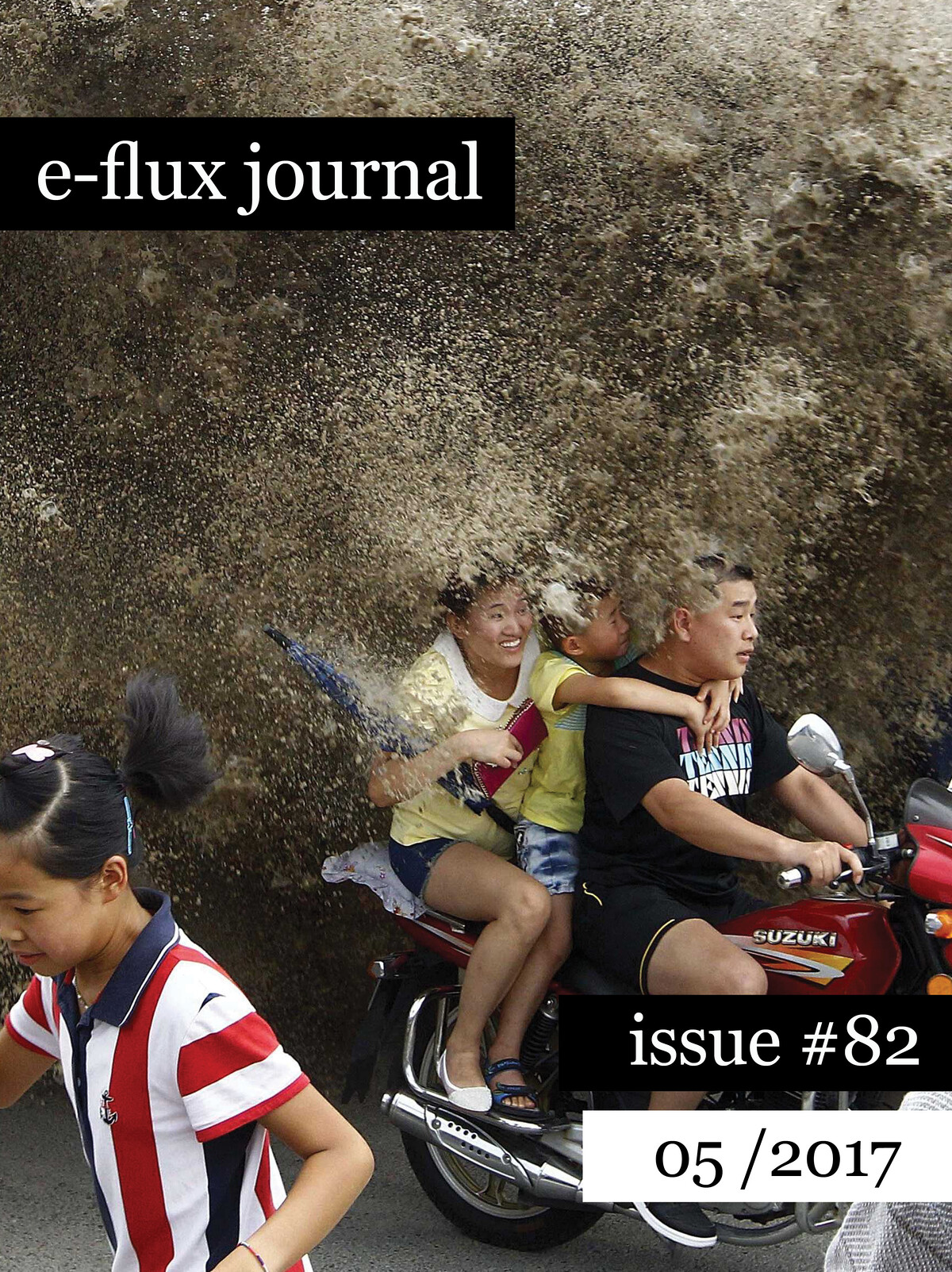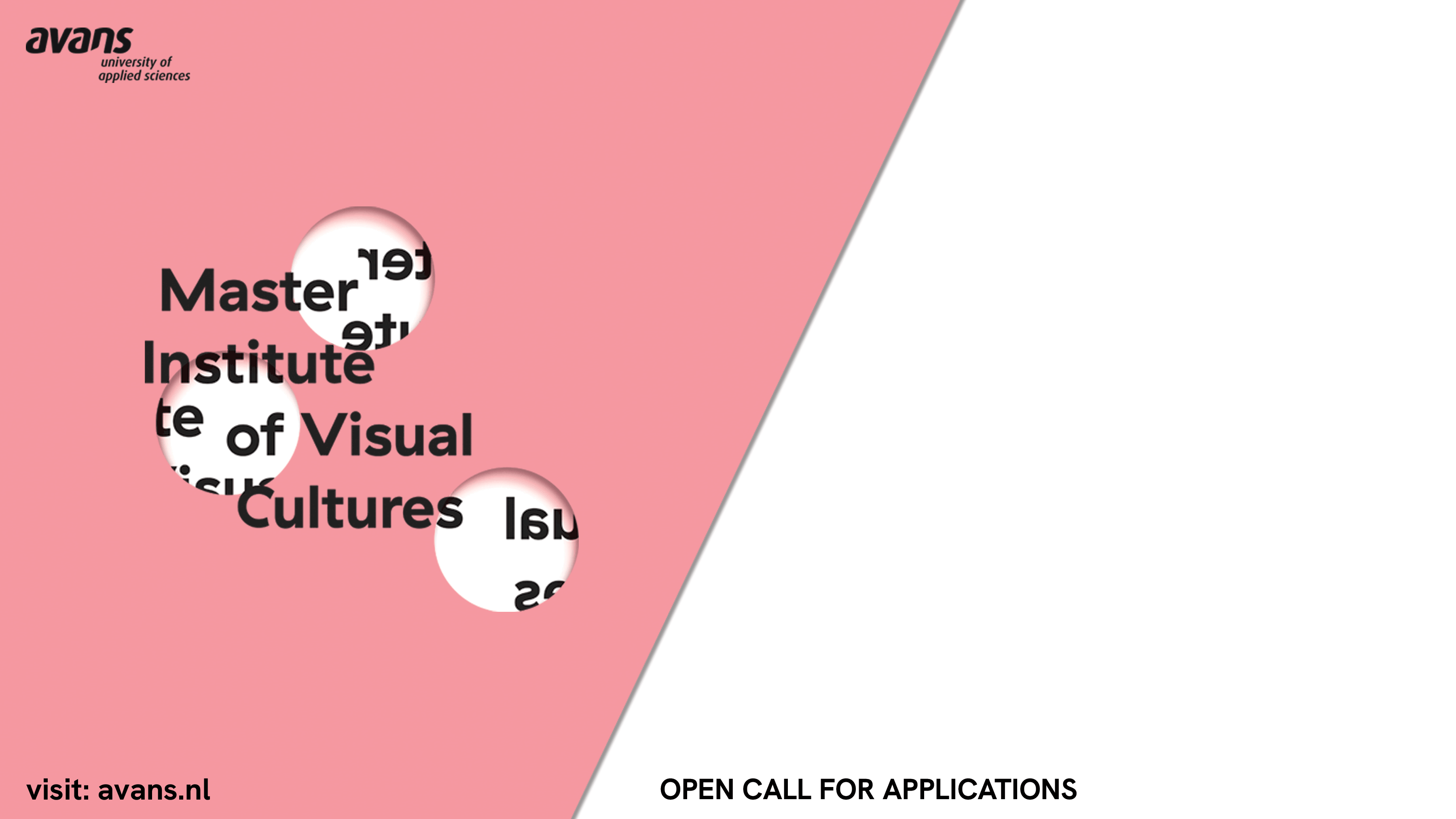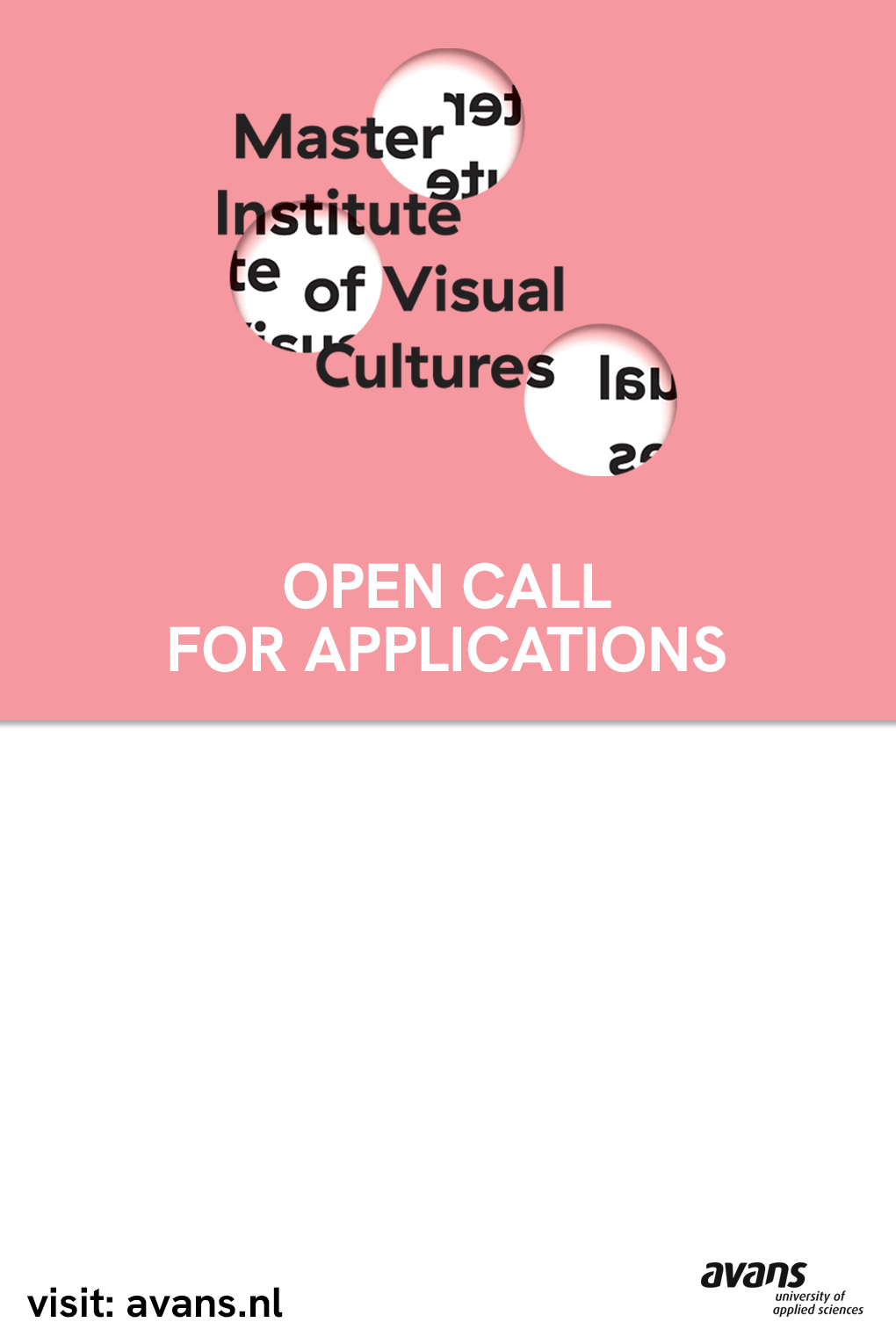with Boris Groys, Oleksiy Radynski, Jasper Bernes, Gilbert Simondon, Arseny Zhilyaev, Dena Yago, Irmgard Emmelhainz, Hamed Yousefi, and Anton Vidokle and Hito Steyerl
The critique of bureaucracy slithers like a sewer—hidden, warm, and necessary—beneath the aging towers of the twentieth-century intellectual metropolis. Arising first as one answer to The Question—namely, what happened in the USSR?—bureaucracy eventually came to replace the bourgeoisie as the preferred explanation for why everything was the way it was. To this day, pseudonyms for bureaucracy remain highly fashionable pieces of conceptual hyperbole. Any characterization of instituted sociality as uniform unfreedom—the spectacle, the body without organs, libidinal economics, Empire, Bloom—has its origins in the bureaucratic obsession with control, as distinct from the bourgeois obsession with ownership.
In “The Great Accelerator” Oleksiy Radynski narrates the story of Soviet scientist Viktor Glushkov, whose efforts to develop an early version of the internet were an attempt to overcome bureaucratic inertia from within the Soviet system itself. Cybernetics, it would seem, represented the solution to the bureaucratic problem of the social as such. If technology is one signifier for anti-bureaucracy, art is another. In “The Poetry of Feedback,” Jasper Bernes examines the impact of cybernetic theory on the development of postwar American art in general and the work of Hannah Weiner in particular. Like technology, art can be seen as either undoing bureaucracy or reinforcing it.
As Boris Groys discusses in “Art, Technology, and Humanism,” Martin Heidegger saw technology as the essence of bureaucratic alienation, something to be undone or counterbalanced by art. Groys argues that “art” and “the human” name two distinct centers of gravity around which technologies of preservation orbit. This is why many of the revolutionary, avant-garde museologists discussed by Arseny Zhilyaev in “Tracing Avant-Garde Museology” looked to the museum as a factory of resurrection. Eventually, technology merges the two forms of preservation into one. Nevertheless, technology is fundamentally split, as Gilbert Simondon postulates in “The Genesis of Technicity.” The unity of the magical world cleaves in two, with technical objects falling on one side, and religious subjects on the other. Art, science, and ethics spring up like flowers growing in the canyon that results from this divide.
Whatever its origin, any ethics should be capable of responding adequately to what Irmgard Emmelhainz calls “the colonial blind spot” that she sees distilled in the work of Juan Rulfo. A writer, filmmaker, and agent of the state, Rulfo recognized the violence of modernization even as he participated in it. Is it fog that blinds us? Or smoke from a village that we have already forgotten is burning? In the matter of complicity and participation, Dena Yago considers the work of profane divination in art production and commercial branding following an apocalyptic collapse in brick-and-mortar retail. How does art respond when commodities merge with their contexts and creativity is the watchword of a revived national corporatism? Finally, Anton Vidokle and Hito Steyerl discuss the limits and possibilities of the latest returns to sun-centered cosmology in a conversation entitled “Cosmic Catwalk and the Production of Time.” What future for the sunlight that gathers, relentlessly, under our collective power?
—Editors
In this issue:
Boris Groys—Art, Technology, and Humanism
This status of the artwork as an object of contemplation is actually relatively new. The classical contemplative attitude was directed towards immortal, eternal objects like the laws of logic (Plato, Aristotle) or God (medieval theology). The changing material world in which everything is temporary, finite, and mortal was understood not as a place of vita contemplativa but of vita activa. Accordingly, the contemplation of artworks is not ontologically legitimized in the same way that the contemplation of the truths of reason and of God are. Rather, this contemplation is made possible by the technology of storage and preservation. In this sense the art museum is just another instance of technology that, according to Heidegger, endangers man by turning him into an object.
Oleksiy Radynski—The Great Accelerator
Soviet society was hypnotized by the notion of technological acceleration at the same time as it was overwhelmed by frustration and boredom. The economy was weighed down by a constant state of crisis, yet no credible scenarios of reform were deemed acceptable in public discourse. The political system showed signs of imminent collapse, yet no viable alternative was anywhere in sight, apart from the idea of more of the same—more growth, more productivity, more speed. In 1985, Mikhail Gorbachev came to power, proposing a program to radically overhaul the economy and society. His plan was based on three notions: perestroika, glasnost, and uskorenie. Perestroika and glasnost have entered the English language as “restructuring” and “openness,” respectively. But the third part of this triad, uskorenie, is not at all well known: it means “acceleration.”
Jasper Bernes—The Poetry of Feedback
Cybernetics, in its ambition to unify the natural and social sciences, and even the humanities and the arts, is a relic of the massive cross-scientific endeavors of the Second World War. For many, this science of control and communication promised a response to social and economic issues that seemed especially pressing. “Control” and “communication” were, of course, central preoccupations for societies whose economic policies were based on Keynesian “social planning,” whose hierarchical, multilayered corporations raised new problems of management, and whose deskilled manufacturing system put control over the content and pace of production in the hands of a professional-managerial class. Cybernetics, unsurprisingly, appealed to corporate management, military engineers, or government technocrats, as it promised a more efficient and less violent means of managing complex processes.
Gilbert Simondon—The Genesis of Technicity
The work of art re-establishes a reticular universe at least for perception. But the work of art doesn’t really reconstruct the primitive magical universe: this aesthetic universe is partial, integrated, and contained in the real and actual universe that has emerged from the split. In fact, the work of art above all sustains and preserves the ability to experience aesthetic feeling, just as language sustains the ability to think, without nevertheless itself being identical to thought.
Arseny Zhilyaev—Tracing Avant-Garde Museology
Almost a decade before the revolution, Bogdanov depicted a postrevolutionary Marxist museum in his science-fiction novel Red Star from 1908. “I imagined there would be no museums in a developed communist society,” exclaims Bogdanov’s astonished protagonist upon his arrival on Mars, home to a highly advanced Communist civilization. The museum has indeed survived, but its function has been modified. The museum is no longer a bourgeois ghetto, a repository for all the delusional hopes for the resolution of social contradictions. The liberating force of proletarian revolution has dissolved class divisions as such, and art, once an autonomous professional sphere, has been integrated into the everyday life and work of humanity.
Dena Yago—On Ketamine and Added Value
Trend reports are a vehicle for identifying emerging behaviors and the forces that motivate them. We issued our own because we wanted our community of peers to be aware of the strategies that were being used on them as consumers, and that they were parroting back in their own artistic and creative practices. Trend forecasting is a form of armchair sociology that identifies how consumers respond to global sociopolitical and environmental change through pattern recognition. Trends are less about seasonal colors, and more about consumers’ crisis response. Our thought was that the more people are aware of these strategies, the more they can develop tactics based on those strategies and use them towards their own ends, whether in their studio practice or in their plan for survival on earth.
Irmgard Emmelhainz—Fog or Smoke? Colonial Blindness and the Closure of Representation
The double bind of modernity officially conceals the colonial carnage necessary for modern progress even as it strategically reveals this same carnage for the purpose of accruing cultural capital. The modern worlding of the world —which includes the production of objective reality by experimental science, knowledge, and design—coincides with the ruthless elimination and instrumentalizaton of certain creatures by others. This blind spot is the “habit” of coloniality, ingrained in the Western unconscious, predicating universality, progress, betterment, and growth on the eradication of alterity. This is the condition of modernity itself, even as it furnishes the resources for a critique of such systemic destruction.
Hamed Yousefi—Art + Art: The Avant-Garde in the Streets
From its inception in the late 1940s, Iranian modernism constantly found itself facing an indifferent public that considered modern art socially irrelevant. In retrospect, the history of modernism in Iran looks like a history of artistic attempts to overcome this sense of alienation from the public. But the more art tried to bridge the gap, the deeper the gap between art and the public grew. In this context, Art+Art came less as a new response than as a radical negation of the presuppositions of the question itself. Shishegaran’s work turned the question of the art-public relationship on its head and dissolved the binary between art and life altogether.
Anton Vidokle and Hito Steyerl—Cosmic Catwalk and the Production of Time
Cosmism is biopolitics because it is concerned with the administration of life, rejuvenation, and even resurrection. Furthermore, it is a radicalized form of biopolitics because its goals are ahead of the current normative expectations and extend even to the deceased. It is a commonly acknowledged view that political power makes a biopolitical turn from simply exercising the sovereign right to kill its subjects without being responsible for their health or life, to governments accepting the obligation to care for the health and welfare of their citizens, to extend their life by administering health services and medical care, securing food supplies, maintaining clean water and air, and so forth. This has been an enormous shift—from the administration of punishment and death to the administration of biological life, upon which the consent to be governed is founded. The next logical step would appear to be for society to guarantee perpetual life for its members and then to extend this to the dead: parents and grandparents and so forth—basically everyone.
Further material related to this issue will be published on e-flux conversations. Stay tuned.
The print edition of e-flux journal can be found at:
Amsterdam: De Appel arts centre / Rijksakademie van beeldende kunsten Andratx: CCA Andratx Antwerp: M HKA Museum van Hedendaagse Kunst / Kunsthal Extra City Århus: Kunsthal Aarhus Athens: OMMU / State of Concept Auckland: split/fountain Austin: Arthouse at the Jones Center Baden-Baden: Staatliche Kunsthalle Baden-Baden Banff: Walter Phillips Gallery, The Banff Centre Barcelona: Arts Santa Mònica / MACBA Basel: Kunsthalle Basel / Museum für Gegenwartskunst Basel Beijing and Guangzhou: Vitamin Creative Space Beirut: 98weeks Belgrade: Cultural Center of Belgrade Bergen: Bergen Kunsthall / Rakett Berlin: b_books / Berliner Künstlerprogramm – DAAD / Bücherbogen am Savignyplatz GmbH / Books People Places / do you read me? / Haus der Kulturen der Welt / Motto / Neuer Berliner Kunstverein (n.b.k.) / Pro qm Belfast: Platform Arts Bern: Kunsthalle Bern / Lehrerzimmer Bialystok: Arsenal Gallery Bielefeld: Bielefelder Kunstverein Biella: UNIDEE - University of Ideas, Cittadellarte - Fondazione Pistoletto Onlus Birmingham: Eastside Projects / Ikon Gallery Bologna: MAMbo – Museo d’Arte Moderna di Bologna Bregenz: Kunsthaus Bregenz Bristol: Arnolfini Brussels: WIELS Contemporary Art Centre Bucharest: National Museum of Contemporary Art Bucharest (MNAC) / Pavilion Unicredit Cairo: Beirut / Contemporary Image Collective (CIC) / Townhouse Gallery Calgary: The New Gallery Cambridge: Wysing Arts Center Castello: Espai d´art contemporani de Castelló (EACC) Chicago: Graham Foundation / Reva and David Logan Center for the Arts / The Renaissance Society at The University of Chicago Cologne: Kölnischer Kunstverein Copenhagen: Overgaden Derry: CCA Derry~Londonderry Dijon: Les Ateliers Vortex Dublin: Dublin City Gallery The Hugh Lane / Project Arts Centre Dusseldorf: Kunstverein für die Rheinlande und Westfalen Eindhoven: Van Abbemuseum Frankfurt: Städelschule / Portikus Gdansk: Łaźnia Centre For Contemporary Art Geneva: Centre de la photographie Ghent: S.M.A.K. Glasgow: CCA Centre for Contemporary Arts / Glasgow Sculpture Studios Graz: Grazer Kunstverein / IZK Institute for Contemporary Art, TU Graz / Kunsthaus Graz / Künstlerhaus KM– / para_SITE Gallery / Grijon: LABoral Centre for Art and Creative Industries Groningen: University of Groningen Hamburg: Kunstverein in Hamburg Helsinki: Museum of Contemporary Art Kiasma Hobart: CAST Gallery / INFLIGHT Hong Kong: Asia Art Archive Iași: theartstudent at the University of Fine Arts, Iași Innsbruck: Galerie im Taxispalais Istanbul: BAS / DEPO / Galeri Zilberman / SALT Johannesburg: Center for Historical Reenactments Kansas City: La Cucaracha Press Klagenfurt: Kunstraum Lakeside Kristiansand: SKMU Sørlandets Kunstmuseum Kyiv: Visual Culture Research Center Leeds: Pavilion Lisbon: Maumaus, Escola de Artes Visuais / Oporto / Kunsthalle Lissabon Ljubljana: Moderna galerija Llandudno: MOSTYN London: Architectural Association—Bedford Press / Calvert 22 / Chisenhale Gallery / Gasworks / ICA / Serpentine Gallery / The Showroom / Visiting Arts Los Angeles: REDCAT Loughborough: Radar, Loughborough University Luxembourg: Casino Luxembourg Madrid: Brumaria / CA2M / PENSART Maastricht: Jan van Eyck Academie Marfa: Ballroom Marfa Melbourne: Monash University Museum of Art (MUMA) / World Food Books Merrylands: Cerdon College Mexico City: Librería Casa Bosques / Proyectos Monclova Milan: Fondazione Nicola Trussardi / HangarBicocca Milton Keynes: MK Gallery Minneapolis: Walker Art Center Monaco: Nouveau Musée National de Monaco Moncton: Fixed Cog Hero (a bicycle courier company) Montreal: Canadian Centre for Architecture (CCA) Moscow: Garage Center for Contemporary Culture Munich: Haus der Kunst / Museum Villa Stuck / Walther Koenig Bookshop New Delhi: Sarai CSDS New York: e-flux / Independent Curators International (ICI) / Printed Matter, Inc / McNally Jackson Nottingham: Nottingham Contemporary North Little Rock: Good Weather Gallery Omaha: Bemis Center for Contemporary Arts Oslo: Kunstnernes hus Oxford: Modern Art Oxford Padona: Fondazione March Per L’Arte Contemporanea Paris: castillo/corrales – Section 7 Books / Centre Pompidou / Les Laboratoires d’Aubervilliers Philadelphia: Bodega Pori: Pori Art Museum Portland: Portland Institute for Contemporary Art (PICA) / Publication Studio Porto: Museu de Arte Contemporânea de Serralves Prague: DOX Centre for Contemporary Art Prishtina: Stacion – Center for Contemporary Art Prishtina Providence: AS220 Reykjavik: Reykjavik Art Museum Riga: kim? Rio de Janeiro: Capacete / A Gentil Carioca Rome: MACRO Museo d’Arte Contemporanea Roma / Opera Rebis Rotterdam: Piet Zwart Institute / Witte de With | Center for Contemporary Art Saint-Nazaire: Le Grand Cafe, centre d’art contemporain Salzburg: Salzburger Kunstverein San Antonio: Artpace San Sebastián: Centro Internacional Cultura Contemporanea São Paulo: KUNSTHALLE São Paulo / Master in Visual Arts, Faculdade Santa Marcelina Sarajevo: Sarajevo Center for Contemporary Art (SCCA) Seoul: The Books / The Book Society Sherbrooke: Foreman Art Gallery of Bishop’s University Singapore: The Ngee Ann Kongsi Library Skopje: Press to Exit Project Space Sofia: ICA-Sofia / Sofia Art Gallery / SWIMMING POOL St Erme Outre et Ramecourt: Performing Arts Forum St Louis: White Flag Projects Stockholm: Bonniers Konsthall / Iaspis / Index - The Swedish Contemporary Art Foundation / Konstfack, University College of Art, Craft and Design / Konsthall C / Tensta konsthall Stuttgart: Württembergischer Kunstverein Stuttgart Tallinn: Kumu Art Museum of Estonia The Hague: Stroom Den Haag Toronto: Art Metropole / Mercer Union / The Power Plant Torun: Centre of Contemporary Art Znaki Czasu in Torun (CoCA) Toowoomba: Raygun Contemporary Art Projects Trieste: Trieste Contemporanea Trondheim: NTNU University Library Umeå: Bildmuseet, Umeå University Utrecht: BAK, basis voor actuele kunst / Casco – Office for Art, Design and Theory Vaduz: Kunstmuseum Liechtenstein Valencia: IVAM–Biblioteca Valletta: Malta Contemporary Art Foundation Vancouver: Artspeak / Fillip—Motto / Morris and Helen Belkin Art Gallery, University of British Columbia / READ Books, Charles H. Scott Gallery, Emily Carr University of Art and Design Venice: The Biennale Library-ASAC Vienna: Kunsthalle Wien / Salon für Kunstbuch—21er Haus Vigo: MARCO, Museo de Arte Contemporanea de Vigo Vilnius: Contemporary Art Centre (CAC) Vitoria-Gasteiz: Centro Cultural Montehermoso Kulturunea Visby: BAC – Baltic Art Center Warsaw: Zachęta National Gallery of Art Wiesbaden: Nassauischer Kunstverein (NKV) Yerevan: Armenian Center For Contemporary Experimental Art (NPAK) Zagreb: Galerija Miroslav Kraljevic / Gallery Nova / DeLVe | Institute for Duration, Location and Variables Zurich: Postgraduate Program in Curating, Zürich University of the Arts / Shedhalle / White Space



